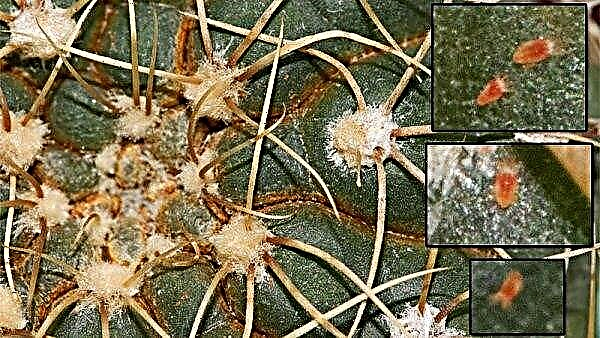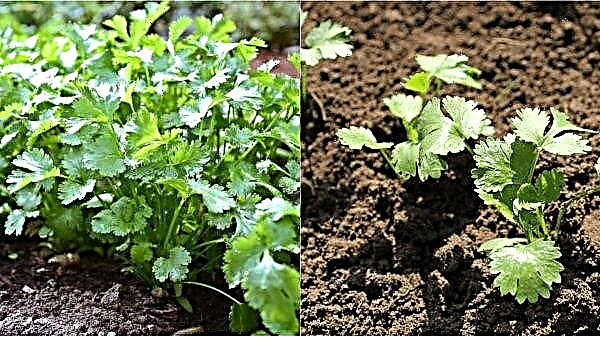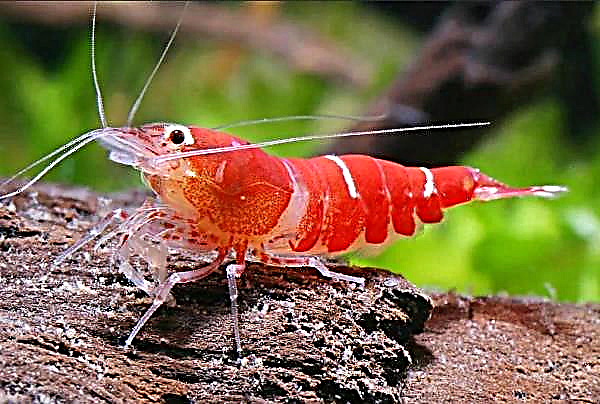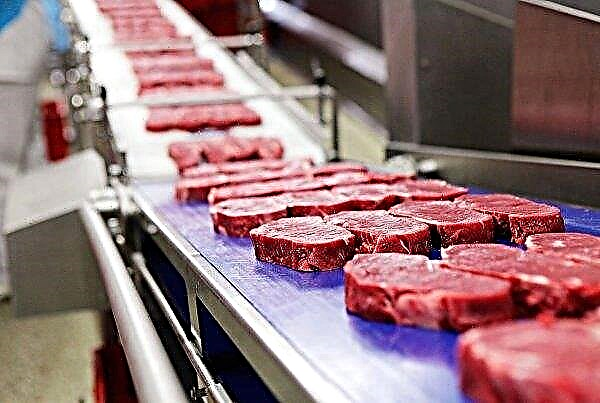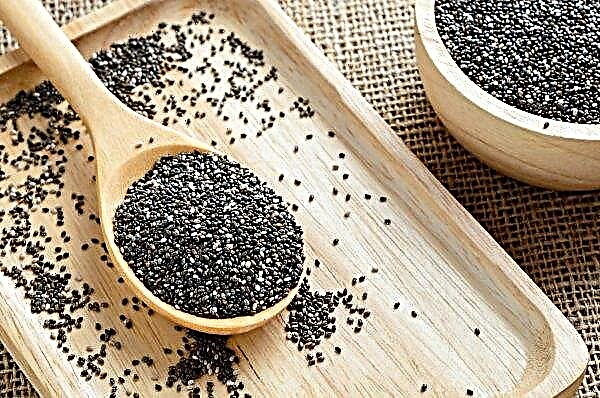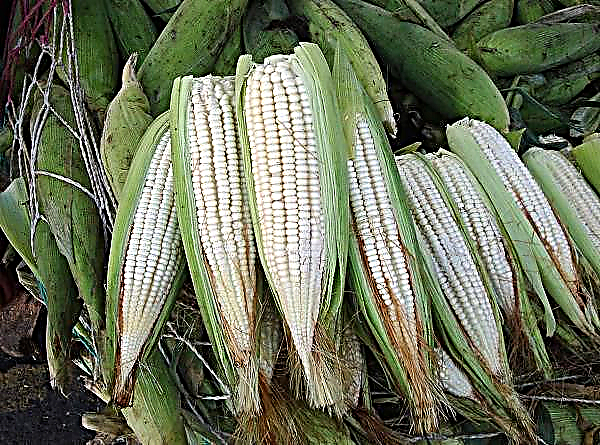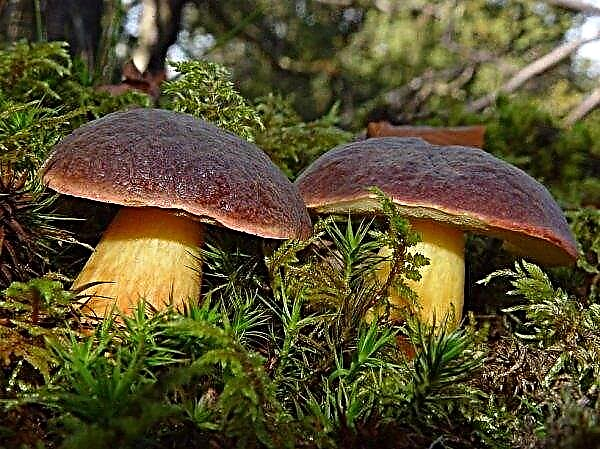Gardeners in southern and central Russia often complain that blueberry bushes do not grow well or form a small berry crop. The main reason for this is considered the inappropriate climate of these areas for northern culture. However, this is not entirely true: one of the important factors for successful cultivation is a suitable soil pH, since this berry shrub loves acidic soil.
What soil does blueberry like - acidic or alkaline
Blueberries are not too demanding on soil fertility, it can be cultivated with different contents of humus and other nutrients in the ground. The main condition for the successful cultivation of this plant is a rather high level of soil acidity, close to a pH value of 3.5–4.5.
Did you know? Blueberries are long-lived shrubs and under ideal conditions can grow and bear fruit for 60 years.
In the wild, substrates that meet these requirements are found in coniferous forests - it is on their territory that this shrub can be successfully cultivated. If the land on the garden bed intended for planting blueberries has low acidity (pH 6–6.5) and is not suitable for culture, it can be acidified by adding sulfur, ground peat or other substances.
How to acidify the soil
In case of too alkaline substrates, when the pH value exceeds 6, an acidification procedure is necessary. It is also sometimes needed for calcareous soils where slow growth of plants is observed. There are many crops that prefer acidic soils, including blueberries.
To make the development as balanced as possible, it is necessary to provide them with exactly such soil in the root layer. To properly acidify the earth, you must first measure its pH. Only after receiving a reliable result can you adjust the appropriate dose to add additional substances. Instructions for use with the finished product are usually found on the packaging.
How to acidify the soil
A little-known, but extremely effective and environmentally friendly way of acidifying the substrate is watering coffee plants. If you mix the finished drink with rain water in a ratio of 1: 1, you get an effective acidifying agent that can be used under blueberry bushes grown in pots. Gardeners should consider that this method leads the earth to the desired parameters much more slowly than artificial preparations, but it is much safer to use.
As a soil acidifier, you can also use:
- peat;
- sulfuric fertilizers (granular sulfur);
- special preparations for acidification;
- phosphoric acid.
Did you know? In a regular 250 ml cup, there are so many blueberries that are enough for an adult to get a quarter of the daily dose of vitamin C.
Blueberry Acidifiers
Acidification should be carried out when the acidity of the planting substrate is higher than that at which the plant feels good. Blueberry prefers a pH value of about 4.5, and to bring it into such a state, you must first adjust this indicator to an inert level - for example, fill up the space near the trunk with sawdust of coniferous trees or their bark, and then acidify it with natural substances or special preparations.
To maintain the effect, the gardener you should refuse to introduce manure, natural compost, as well as fertilizers containing calcium and magnesium under the blueberry bushes. Maintaining the correct soil pH is possible only with constant monitoring: it is necessary to observe the substrate and plants, as well as to carry out control measurements of the soil at least 1 time per year. If the value obtained from the measurement deviates from the desired, measures must be taken to re-acidify the garden beds.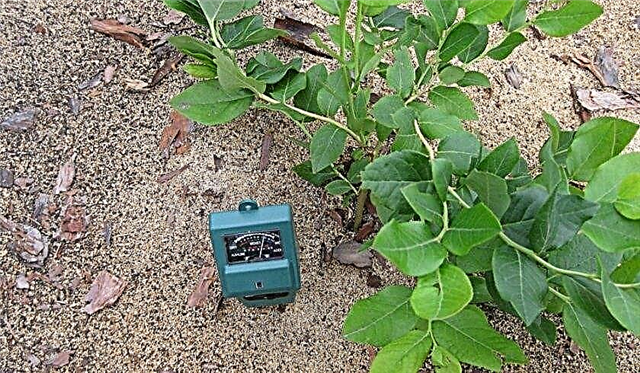
Peat
The natural pH of peat varies between 3–5, which allows, after mixing it in half with the soil, to obtain a substrate of very good quality.
There are several types of peat:
- High acid - formed from mosses Sphagnopsida sphagnum in conditions of high humidity, in the lower soil layer, has strong hygroscopic properties. It is colored brown and has a pH from 3.0 to 4.5.
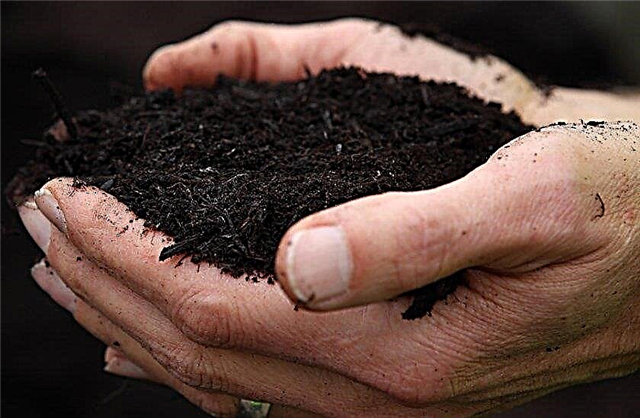
- Lowland - It occurs quite often in nature, usually in floodplains of rivers, where it forms acid meadows. Formed from dying aquatic plants, such as various types of sedge, grass, and ground mud. Its pH is neutral or slightly alkaline and is about 7.0. It differs by almost black coloring.
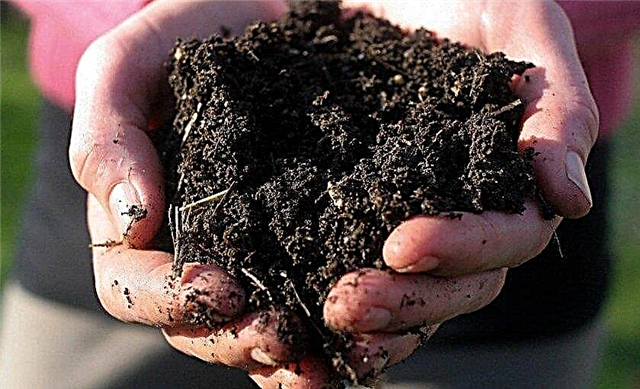
- Intermediate or transitional - combines the characteristics of lowland and surface peat and is slightly acidic. Commonly used in horticulture to acidify planting substrates. Such a variety is created when water ceases to reach the level of lowland peat, after which the lower layer begins to be supplemented by vegetation of surface peat bogs.
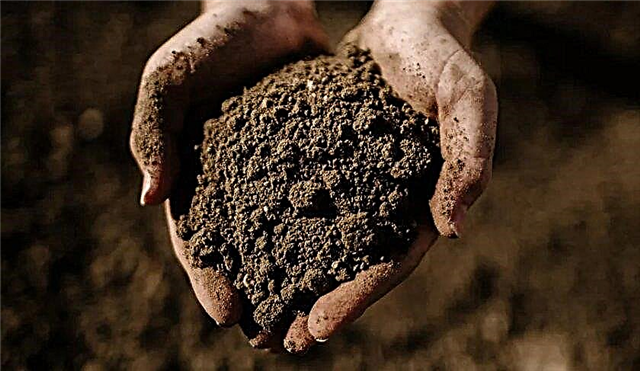
The value of peat lies in its ability to absorb and store water in large quantities, which leads to rationing of water supply in both heavy and light soils. Its use on sandy lands allows you to establish water supply to plants, while the use on clay soils helps to absorb excess moisture.
Important! Coniferous sawdust and bark are mistakenly considered a kind of "panacea" that can effectively acidify the soil, but in fact they lower the pH only within the root zone.
In its natural form, the substrate has no nutritional value. To acidify blueberries, it is necessary to mix the soil with peat in a ratio of 1: 1 at a depth of 15–20 cm. The method gives the best results when the procedure is carried out in autumn.
Tiovit Jet
Ready-to-use acidifying preparations can be used both for pouring in and for watering after dissolving them in water. These products have a significant advantage in that they can be used throughout the growing season of plants. To get the most suitable result, simultaneously with the introduction of drugs you need to constantly monitor the pH level of the soil under the blueberry bushes. The acidification method should be selected based on the type of soil and its pH. The fastest and most effective way is the use of granular or powder sulfur, which is contained, for example, in the preparation “Tiovit Jet”. This remedy needs to be added several times a year or poured under a growing bush of blueberries. Sulfur interacts with bacteria in the soil and gradually forms small amounts of sulfuric acid, which acidifies the soil.
The acidification method should be selected based on the type of soil and its pH. The fastest and most effective way is the use of granular or powder sulfur, which is contained, for example, in the preparation “Tiovit Jet”. This remedy needs to be added several times a year or poured under a growing bush of blueberries. Sulfur interacts with bacteria in the soil and gradually forms small amounts of sulfuric acid, which acidifies the soil.
Orthophosphoric acid
Phosphoric (orthophosphoric) acid can be used as a fertilizer of different cultures, as well as to increase the acidity of the substrate. If it is concentrated, then the dosage should be no more than 18 g per 10 liters of water. As a liquid fertilizer for blueberries, phosphoric acid and ammophos are used, which are used in turn.
The first substance can simultaneously perform the function of cleaning the drip irrigation system from impurities. When applied with irrigation water, the maximum allowable concentration of nutrients in the liquid should not exceed: 0.5% nitrogen, 2% phosphates and 3% potassium. The mineralization of the feeding solution fed under the bush should not exceed 3 g / l when one component is added, and 8 g / l when two- or three-component mixtures are fed.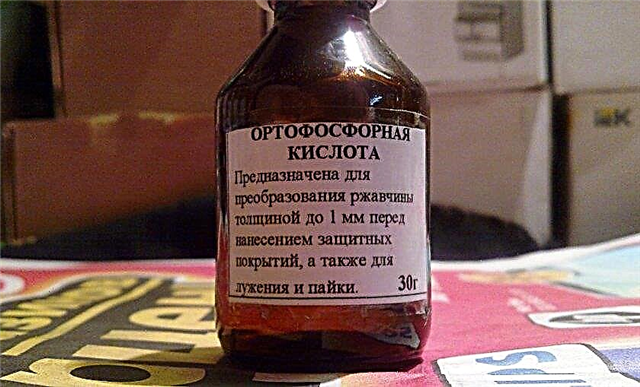
How to acidify water for irrigation
For irrigation, it is advisable to use acidified water, optimally rain, and if it is not available, you can use tap water, but with some additives. The water directly from the tap is too hard and contains a lot of calcium, so to soften it, add citric acid (10 l of liquid - 1 tbsp. Crystals) or table vinegar (10 l of water - 1 tbsp of product).
Video: how to acidify blueberries
How often to water
Blueberry loves moderately moist soil and does not tolerate swamping of the root zone - this prevents the flow of oxygen to the underground part of the plant. In the warm season, starting in May and ending in September, the berry plot requires a two-time weekly supply of water, at least 5 liters for each adult bush. Watering the bush is necessary taking into account the natural precipitation. The lack of moisture affects the quality of the fruit - they remain small and contain little juice.
Important! The gardener should remember that with each watering, many nutrients and minerals are washed out of the soil substrate, as a result of which the pH of such soil gradually becomes alkaline.
The most important periods of moisture demand for blueberries:
- beginning and end of flowering;
- berry formation;
- the beginning of the ripening of the crop.
So, in order to get a rich harvest of tasty and healthy berries, the gardener must provide the blueberry bushes with soil suitable for this crop acidity. In the process of growing crops, you can adjust the pH of the soil by adding additional substances or watering.





